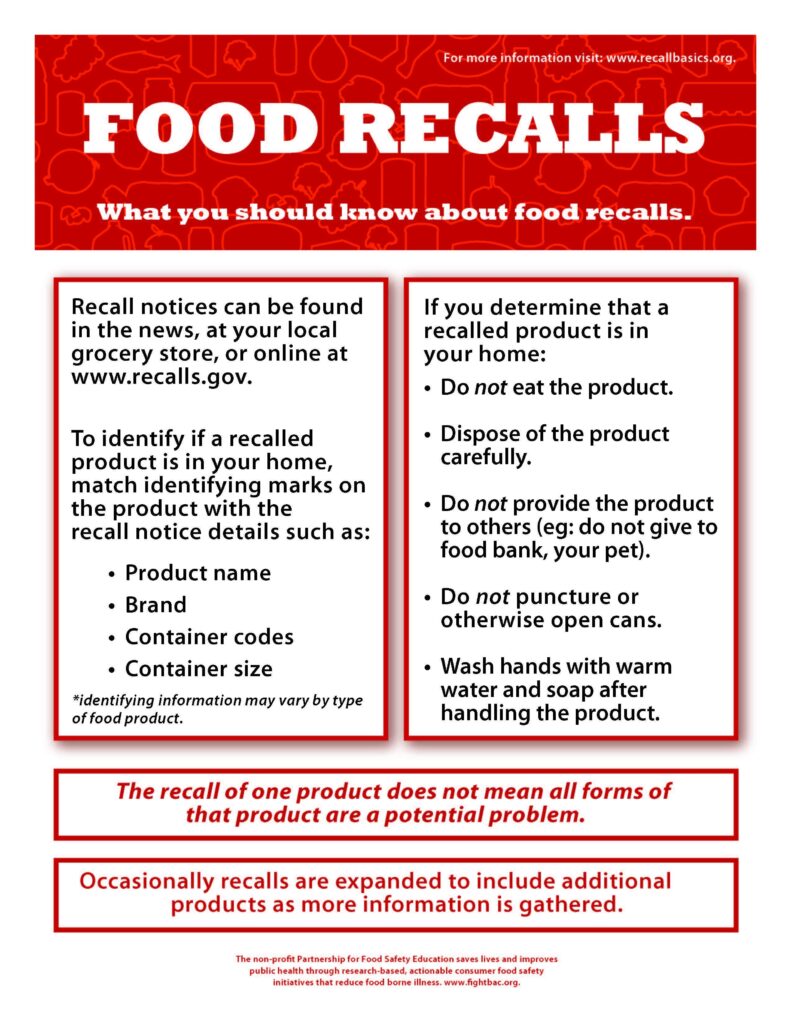Table of Contents
- Major Product Recalls Spotlight Critical Safety Failures
- In-Depth Analysis of Malfunction Causes and Industry Impact
- Consumer Protection Strategies and Preventive Measures
- Recommendations for Manufacturers to Enhance Product Safety
- The Conclusion
Major Product Recalls Spotlight Critical Safety Failures
Recent high-profile recalls have underscored glaring vulnerabilities in product safety standards, raising alarms across multiple industries. These recalls often trace back to critical design flaws or manufacturing oversights that significantly compromise user safety. In many cases, the malfunctioning components not only render the product inoperative but also pose serious risks such as fire hazards, electric shocks, and mechanical failures. Such incidents highlight a pressing need for companies to fortify quality assurance processes and adopt more rigorous testing protocols before products reach consumers.
Key factors triggering these large-scale recalls include:
- Defective electronic circuitry causing overheating or spontaneous shutdowns.
- Faulty mechanical parts prone to breaking or causing injury during normal use.
- Software glitches that impair vital operational functions.
- Substandard materials that degrade faster than anticipated, undermining durability and safety.
Regulators and consumer watchdogs are intensifying scrutiny, mandating faster reporting and transparent communication from manufacturers. The ongoing trend emphasizes the importance of proactive risk management and swift corrective action to uphold consumer confidence and prevent potentially devastating consequences.
In-Depth Analysis of Malfunction Causes and Industry Impact
Product malfunctions frequently arise from a complex interplay of design flaws, manufacturing defects, and insufficient quality control measures. In recent recall cases, faulty electrical components and software glitches have been primary contributors, leading to overheating, unexpected shutdowns, and potential safety hazards. Additionally, inadequate testing protocols during the prototype phase allowed critical issues to go undetected until products reached consumers. These systemic vulnerabilities highlight the pressing need for stringent oversight and more robust validation processes across the supply chain.
The ripple effects on the industry extend well beyond immediate financial losses. Major recalls erode consumer trust, often prompting widespread regulatory scrutiny and tighter compliance requirements. Manufacturers must now balance rapid innovation cycles with uncompromising safety standards, while navigating the costs of redesign and reputational repair. Key repercussions include:
- Increased investment in quality assurance and risk management
- Enhanced collaboration with third-party auditors and certification bodies
- Strategic shifts toward transparent communication and crisis response frameworks
Consumer Protection Strategies and Preventive Measures
Ensuring the safety of consumers necessitates a multi-layered approach involving regulatory vigilance, corporate accountability, and informed consumer participation. Companies must implement rigorous quality control protocols that go beyond standard compliance, integrating regular testing and real-time monitoring systems to detect and prevent hazards before products reach the market. Regulatory agencies, meanwhile, continue to enhance their recall frameworks, emphasizing swift communication and transparency to mitigate risks effectively. Consumer education campaigns play a pivotal role by empowering individuals to recognize early warning signs of defective products and understand how to respond promptly, thus reducing the potential for harm.
Preventive strategies frequently observed in successful recall management include:
- Advanced risk assessment models that predict potential failure points in product design and manufacturing.
- Collaborative platforms between manufacturers, regulators, and consumer advocacy groups for seamless information exchange.
- Robust after-sales monitoring systems that collect user feedback and performance data post-purchase.
- Clear labeling and usage instructions designed to minimize user error and misuse.
- Legally binding requirements for manufacturers to maintain product traceability throughout the supply chain.
Recommendations for Manufacturers to Enhance Product Safety
Proactive Quality Control Measures should be at the forefront of manufacturers’ strategies to mitigate risks related to product safety and malfunctions. Implementing comprehensive testing protocols throughout the production process-not just final inspections-can detect vulnerabilities early. Regular audits, real-time monitoring of materials and components, and investment in advanced diagnostic technologies are critical to identifying potential defects that could lead to recalls. Furthermore, fostering a culture of continuous improvement and accountability within manufacturing teams ensures that safety is prioritized at every stage, reducing the likelihood of widespread issues post-distribution.
Transparent Communication and Consumer Feedback Integration play a crucial role in enhancing product safety. Manufacturers must establish clear channels for customers to report concerns and malfunctions quickly, enabling swift responses to emerging problems. Leveraging data analytics to analyze this feedback can reveal systemic issues before they escalate. Additionally, collaboration with regulatory bodies and third-party safety organizations helps ensure compliance with evolving safety standards. By prioritizing transparency and responsiveness, manufacturers not only safeguard consumers but also protect brand reputation from the costly consequences of large-scale recalls.
The Conclusion
In conclusion, major product recalls serve as critical reminders of the ongoing need for rigorous safety standards and proactive quality control within manufacturing industries. As companies face increasing scrutiny from regulators and consumers alike, transparency and swift action remain essential to mitigate risks and protect public health. Staying informed about recalls not only helps consumers make safer choices but also drives industry-wide improvements, fostering greater trust and accountability moving forward.Check Our Other Blogs
- StunGun – Your Trusted Source for Stun Guns, Laws, and Self-Defense Tips
- PepperSprayLaws – Your Trusted Resource for Pepper Spray Information
- StunGunLaws – Your Trusted Guide to Stun Gun Legality and Safety




